We put the Samsung Galaxy S23 Ultra through our rigorous DXOMARK Display test suite to measure its performance across six criteria. In this results summary, we will break down how it fared in a variety of tests and several common use cases.
Overview
Key display specifications:
- 6.8 inches AMOLED, (~90.7% screen-to-body ratio)
- Dimensions: 163.4 x 78.1 x 8.9 mm (6.43 x 3.07 x 0.35 inches)
- Resolution: 1440 x 3088 pixels, (~500 ppi density)
- Aspect ratio: 19.3:9
- Refresh rate: 120 Hz
Scoring
Sub-scores and attributes included in the calculations of the global score.
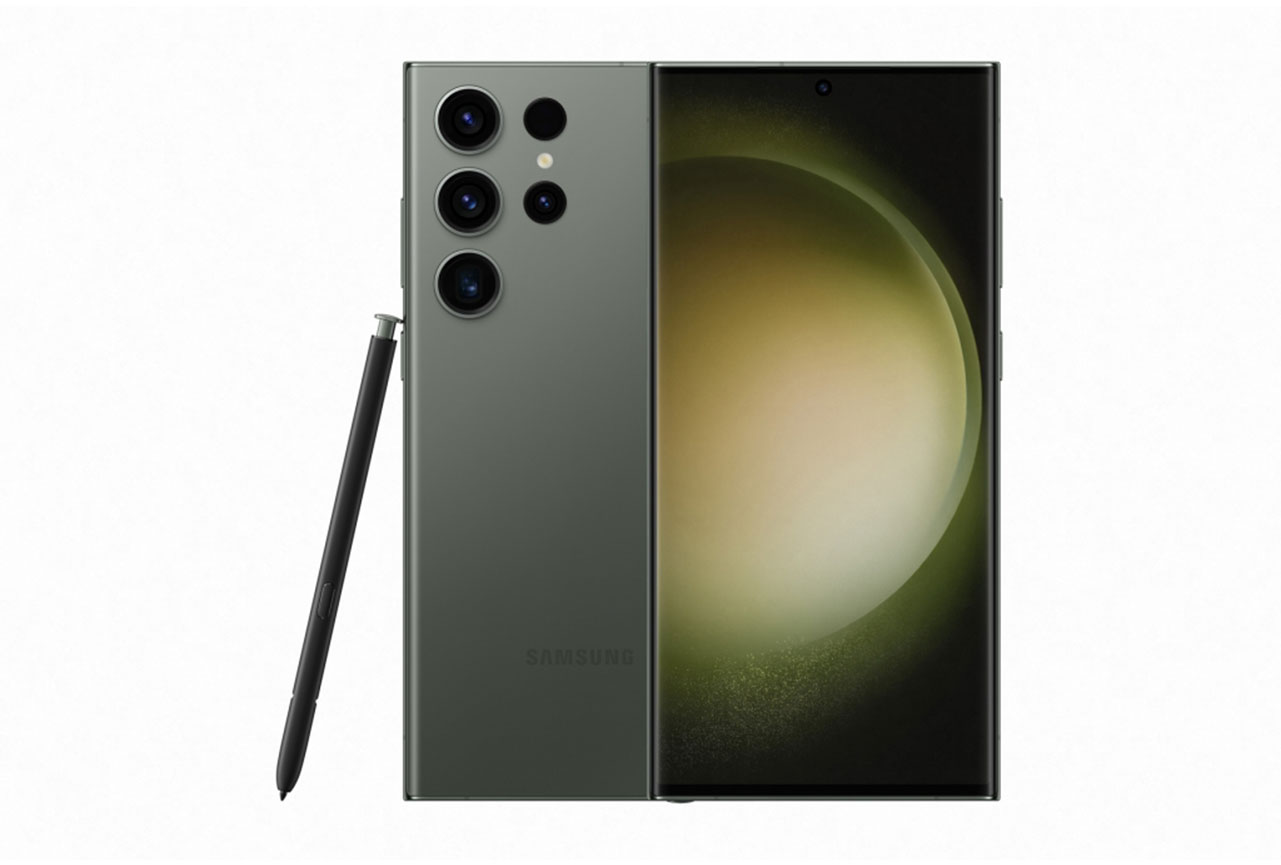 Samsung Galaxy S23 Ultra (Snapdragon)
Samsung Galaxy S23 Ultra (Snapdragon)


 30th
30th
 22nd
22nd
Pros
- Good readability in most lighting conditions
- Very good video experience overall
- Good color fidelity in most lighting conditions
Cons
-
Low flicker frequency and too-high brightness for night reading
-
Under sunlight, colorful content lacks nuances
-
Details and brightness lacking in indoor lighting conditions
The Samsung Galaxy S23 Ultra turned in an excellent overall display performance, showing some marked improvements over its predecessor. Both the S23 Ultra and the S22 Ultra continue to lead the pack in providing the best user experience for video, with a refresh rate that adapts itself to the frame rate of the content being played.
Despite good progress in motion control and to a lesser degree, in color rendering, the S23 Ultra remained essentially at the same level as the S22 Ultra for readability, and showed the same visible aliasing as the S22 Ultra when playing video games.
Please note that all comparisons with the S22 Ultra in this review were made with the Snapdragon version of that device. The S23 Ultra comes only with a Snapdragon processor; unlike previous generations, there is no Exynos-powered version.
Test summary
About DXOMARK Display tests: For scoring and analysis in our smartphone and other display reviews, DXOMARK engineers perform a variety of objective and perceptual tests under controlled lab and real-life conditions. Note that we evaluate display attributes using only the device’s built-in display hardware and its still image (gallery) and video apps at their default settings. (For in-depth information about how we evaluate smartphone and other displays, check out our articles, “How DXOMARK tests display quality” and “A closer look at DXOMARK Display testing.”
The following section gathers key elements of our exhaustive tests and analyses performed in DXOMARK laboratories. Detailed performance evaluations under the form of reports are available upon request. Do not hesitate to contact us.
Readability
Samsung Galaxy S23 Ultra (Snapdragon)
164
Readability evaluates how easily and comfortably users can read still content (photos & web) on the display under different real-life conditions. DXOMARK uses its Display Bench to recreate ambient light conditions ranging from total darkness to bright sunlight. In addition to laboratory tests, perceptual analysis is also made in real-life environments.
Scoring just slightly better than its S22 Ultra predecessor, the Samsung Galaxy S23 Ultra came close to the very best devices for readability. The S23 Ultra offers an “Extra Brightness” mode that allows users to manually boost the maximum brightness. Without the option activated, max brightness is 600 nits; with the option on, the maximum brightness is 1050 nits.
The S23 Ultra had good outdoor readability, but was not better than the older S22 Ultra in this regard. Further, the newer device was slightly behind the S22 Ultra in terms of contrast and details in indoor conditions, as seen below in the collar of the model’s coat.
In the illustrations below, both Samsung devices show slightly less contrast than the iPhone 14 Pro Max.

In shady lighting conditions, the S23 Ultra lacked enough brightness and details to be clearly readable.

Under sunlight, the powerful Samsung display in High Brightness Mode showed good readability, with even the darkest details enhanced enough for users to see. However, color nuances were lost. Moreover, at 1910 nits, the boost for the S23 Ultra was less bright than for the S22 Ultra (1990 nits).

The Samsung Galaxy S23 Ultra screen showed excellent brightness and color uniformity.
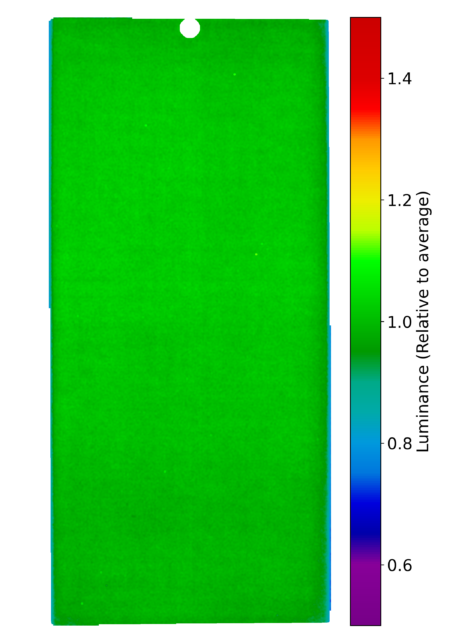
Color
Samsung Galaxy S23 Ultra (Snapdragon)
165
The color attribute evaluates the capacity of the device to accurately reproduce colors. The measurements taken are for fidelity, white point color, and gamut coverage. We perform color evaluations for different lighting conditions to see how well the device can manage color in the surrounding environment. Colors are measured using a spectrophotometer in a controlled lighting environment. Perceptual analysis of color rendering is against the reference pattern displayed on a calibrated professional monitor.
As with Samsung devices generally, the S23 Ultra’s color was saturated, except for skin tone colors (see color fidelity graph), as users would find such saturation disturbing, given how sensitive human eyes are in this regard. Overall, the S23 Ultra was less saturated than its predecessor.
The S23 Ultra managed the rendering better than the S22 series, but while the S22 Ultra had an orange cast, the S23 Ultra had a green cast, which is worse for skin-tone rendering. Despite the green cast, color fidelity was good.
Like most devices, the S23 Ultra does not adapt to the ambient lighting; its white point is set to a D70 illuminant (7000 Kelvin).
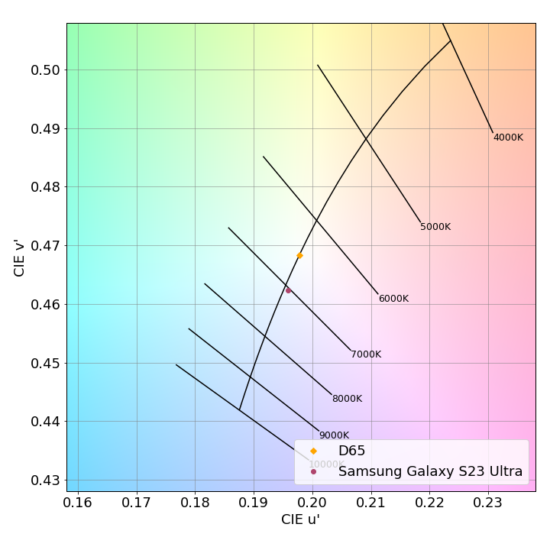
On the following illustrations, the S23 Ultra’s color under intense lighting was oversaturated, but it was still a slight improvement over its predecessor’s color, even though it was not a full correction.
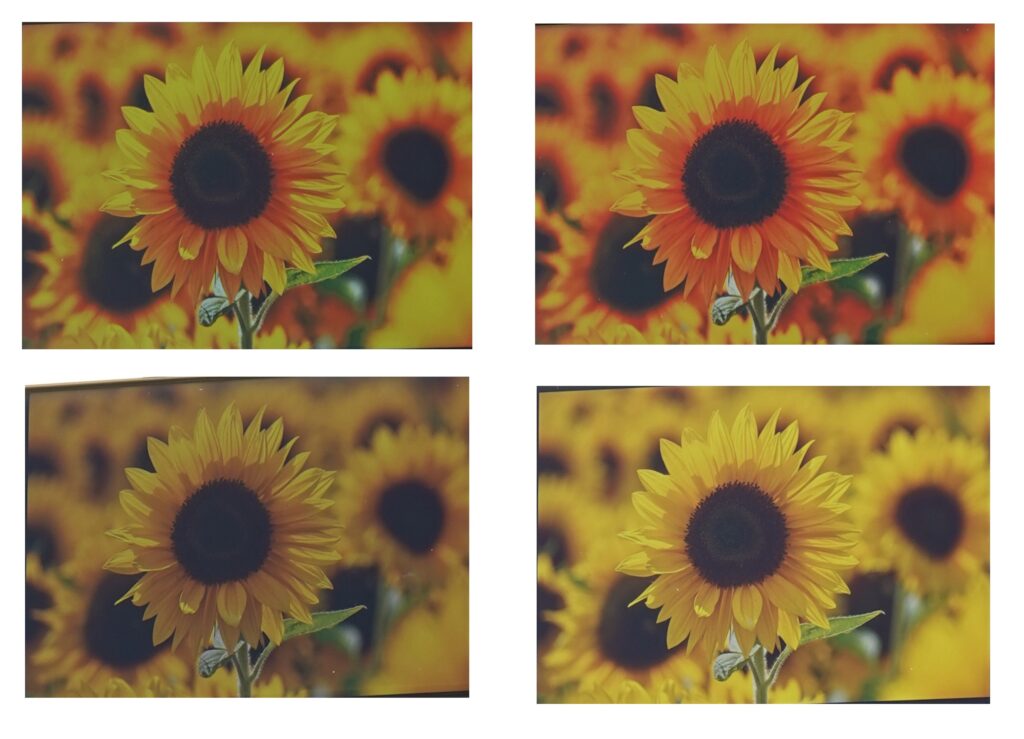
The Samsung S23 Ultra tended to oversaturate colors while maintaining the same hue. However, skin tones had a natural rendering.
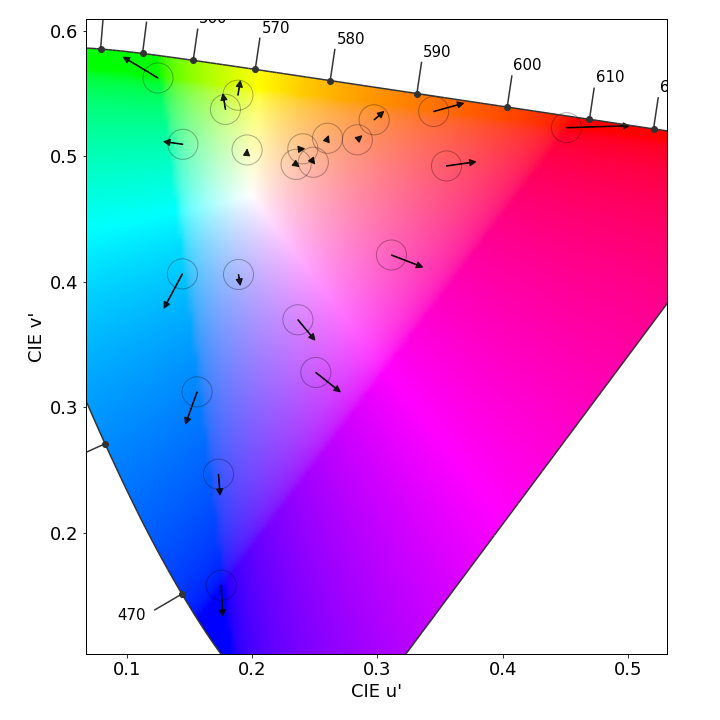
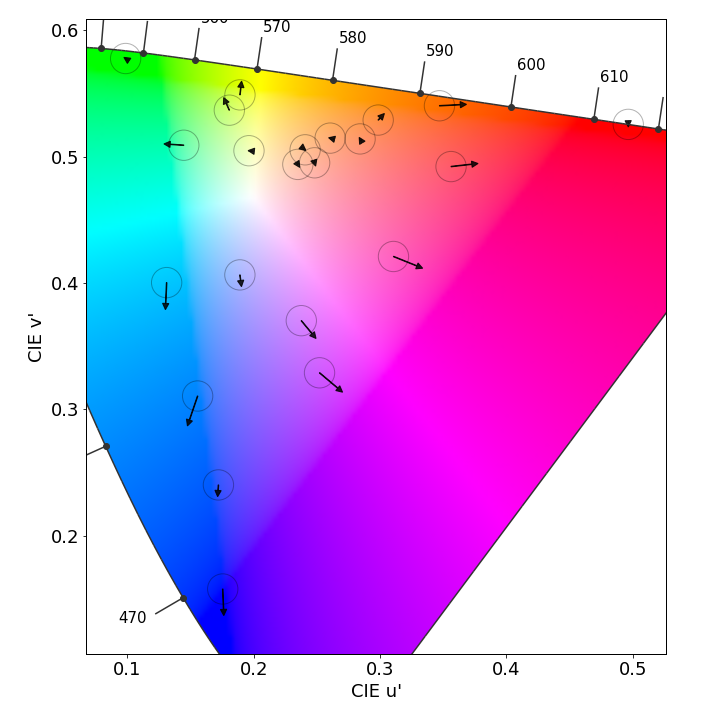
At an angle, the white point takes a blue to green cast.
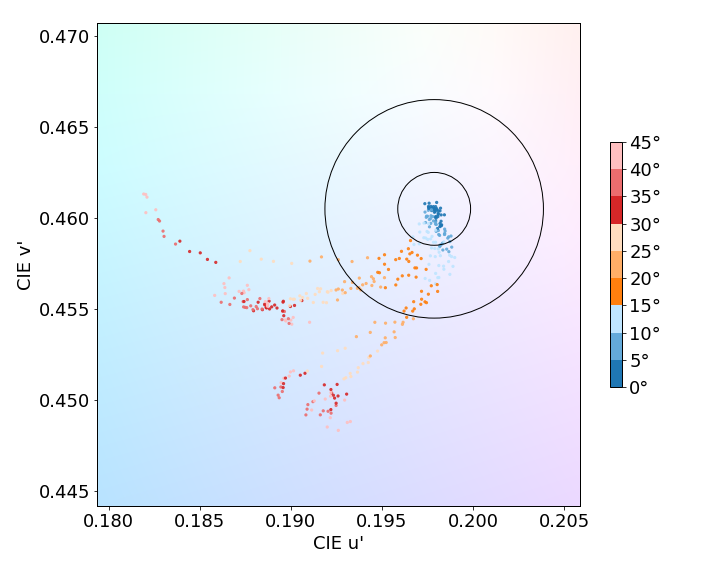


Video
Samsung Galaxy S23 Ultra (Snapdragon)
167
Our video attribute evaluates the Standard Dynamic Range (SDR) and High Dynamic Range (HDR10) video handling of each device in indoor and low-light conditions. We measure tone mapping, color gamut, brightness and contrast of the display. We perform perceptual analysis against our professional reference monitor (Sony BVM-HX310) to ensure that the rendering respects the artistic intent.
Among all smartphones in the DXOMARK database, the latest Samsung device continues to provide the best video experience for end users, with good brightness and pleasant colors. The S23 Ultra is 10 nits brighter in low light than the S22 Ultra, helping the more recent device provide a more realistic appearance to HDR scenes.
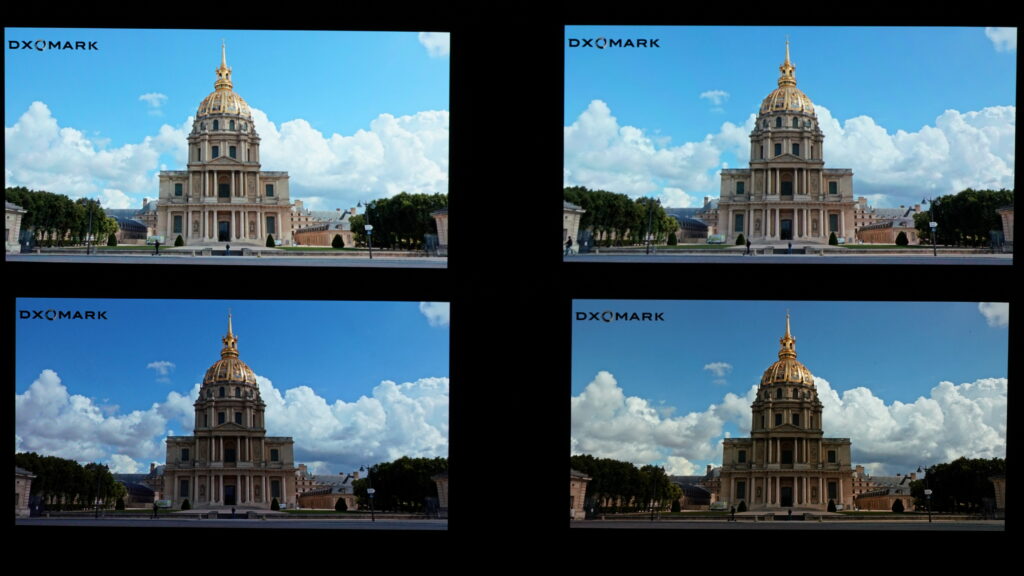
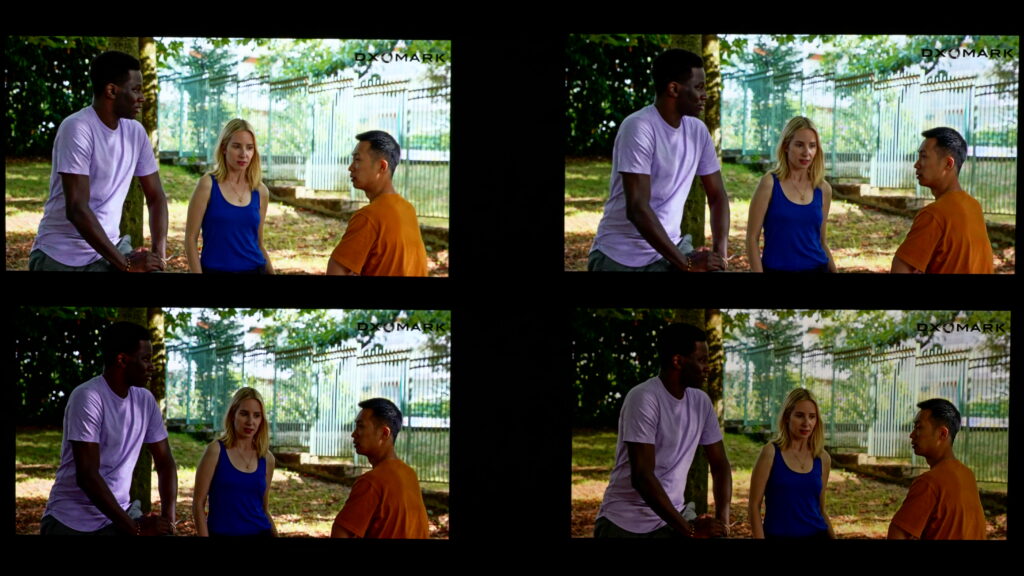
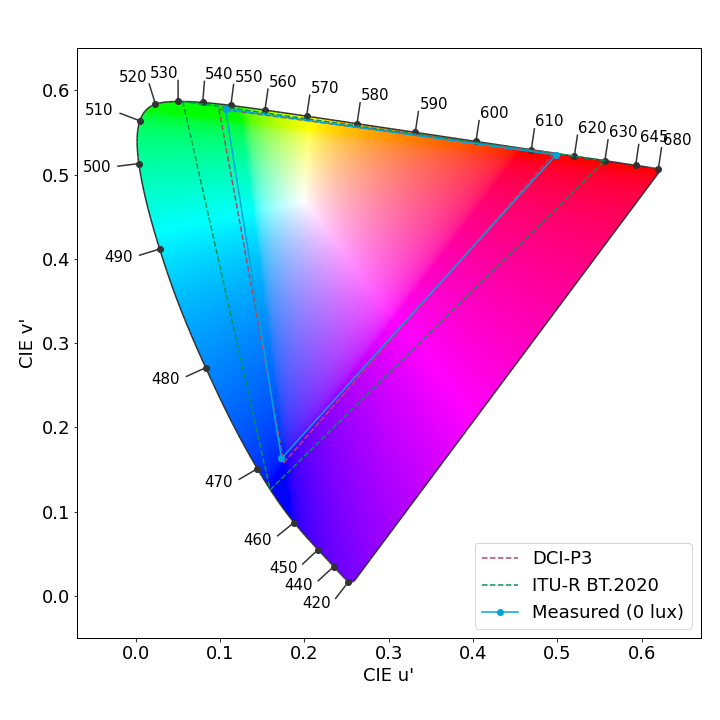
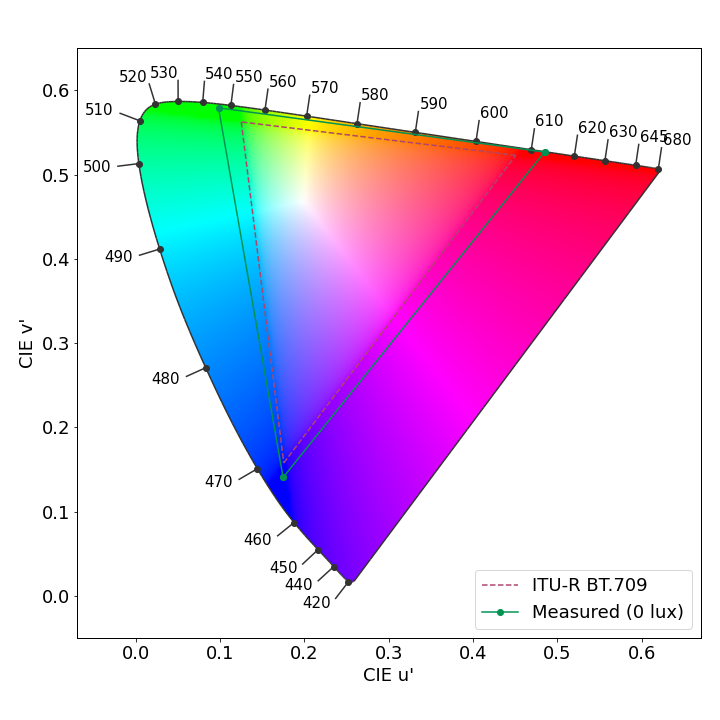
Motion
Samsung Galaxy S23 Ultra (Snapdragon)
The motion attribute evaluates the handling of dynamic contents. Frame drops, motion blur, and playback artifacts are scrutinized using games and videos.
The Samsung Galaxy S23 Ultra managed frame drops noticeably better than the S22 Ultra, as well as providing improved reactivity when using the interface to navigate in a video.
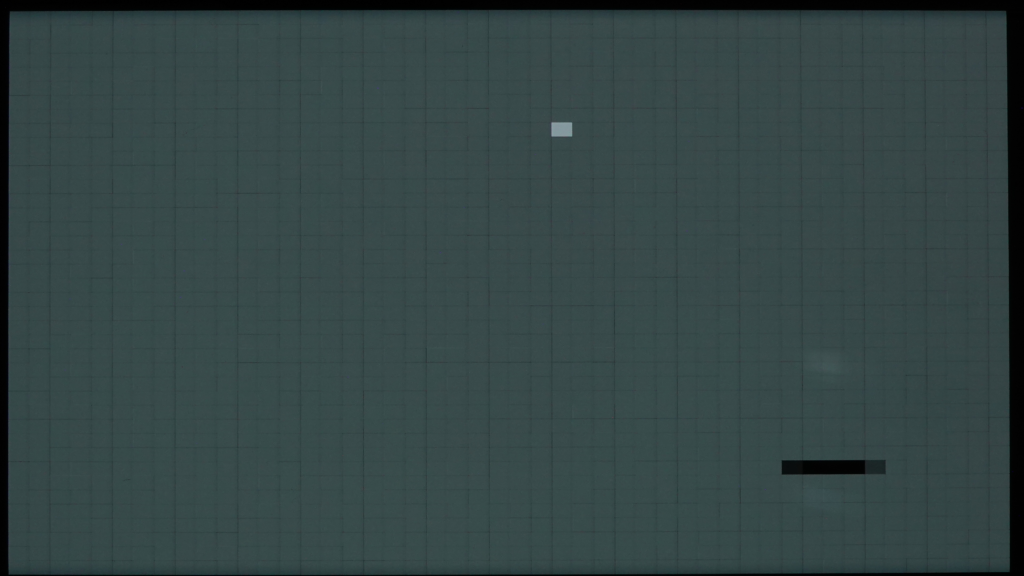
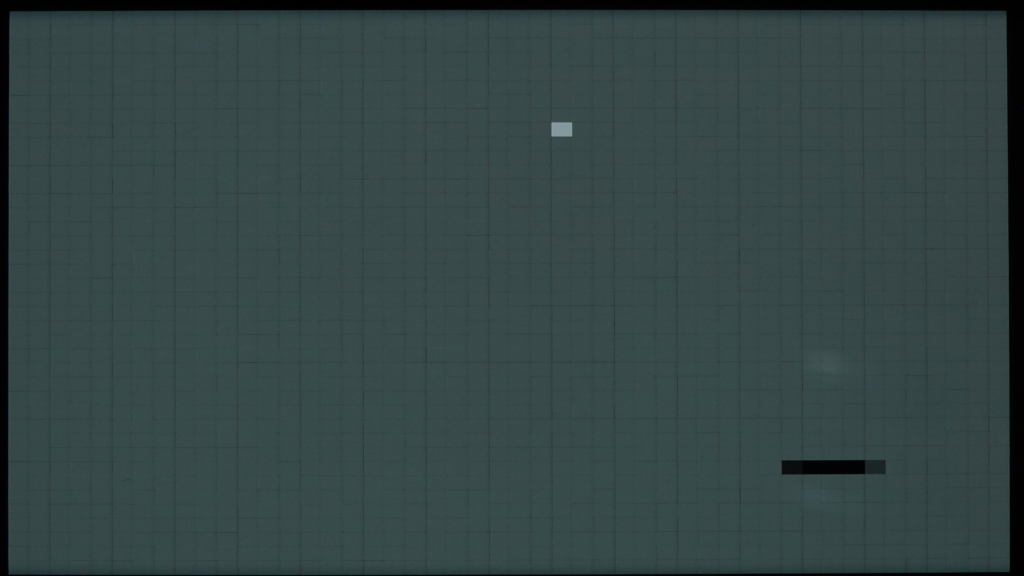
The S23 Ultra also adapted its frame rate depending on the video content. We played a 24 fps, 30 fps and 60 fps white video through the YouTube app and measured the time response of the device (shown below). We noticed that the S23 Ultra refresh rate matchef the displayed video frame rate.
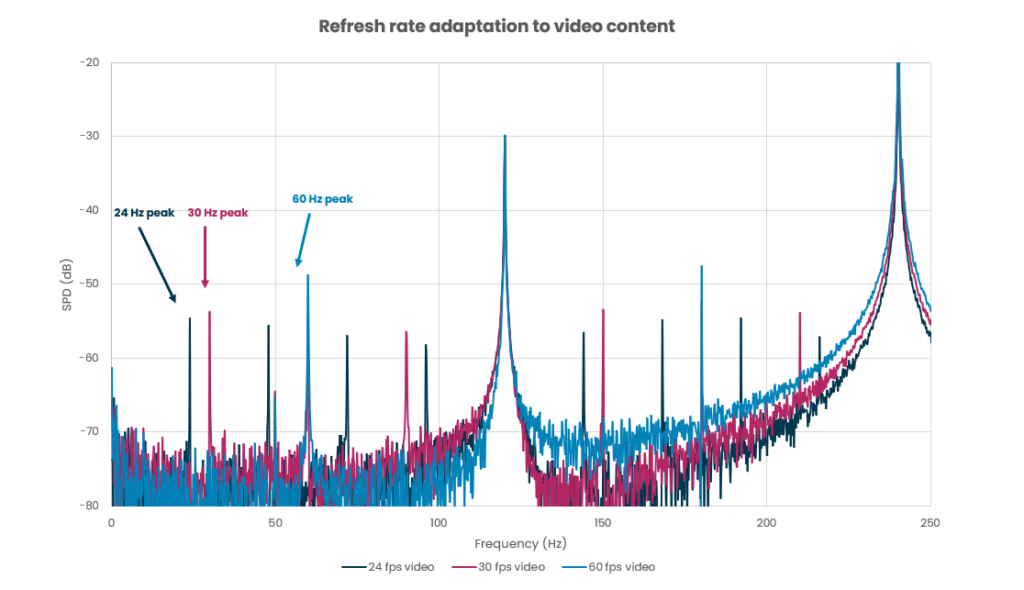
Touch
Samsung Galaxy S23 Ultra (Snapdragon)
164
To evaluate touch, DXOMARK uses a touch robot and a high-speed camera to play and record a set of scenarios for smoothness, accuracy and response-time evaluation.
Touch is where the S23 Ultra made strong improvements, achieving greater smoothness and accuracy.
Artifacts
Samsung Galaxy S23 Ultra (Snapdragon)
Evaluating artifacts means checking for the performance, image rendering and motion flaws that can affect the end-user experience. DXOMARK measures precisely the device’s reflectance and the presence of flicker, and assesses the impact of residual aliasing when playing video games, among other characteristics.
The S23 Ultra had the same problem with flicker and showed visible aliasing as the S22 Ultra (albeit slightly improved); further, it handles judder a bit better than the older phone.
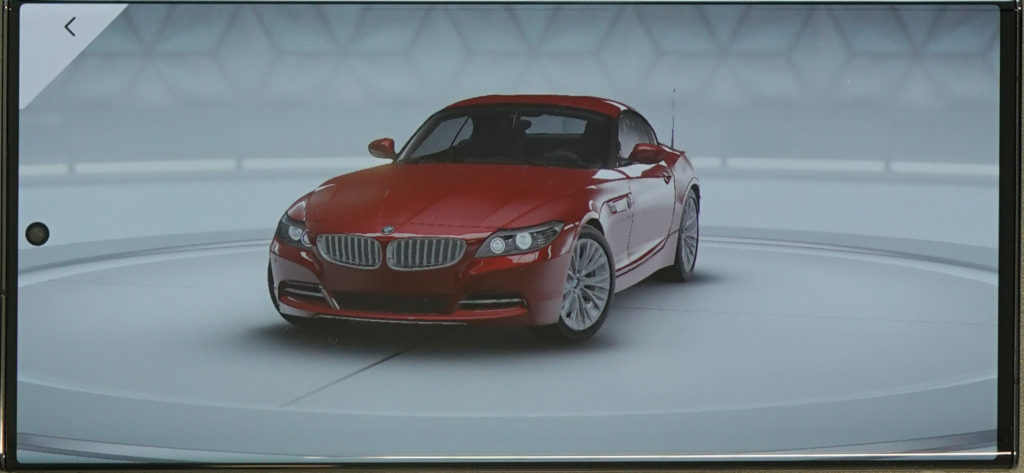


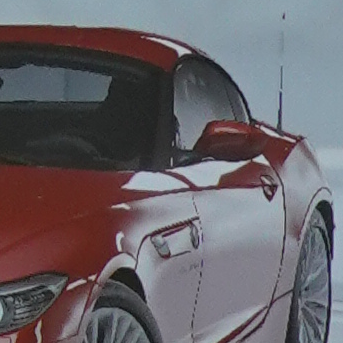


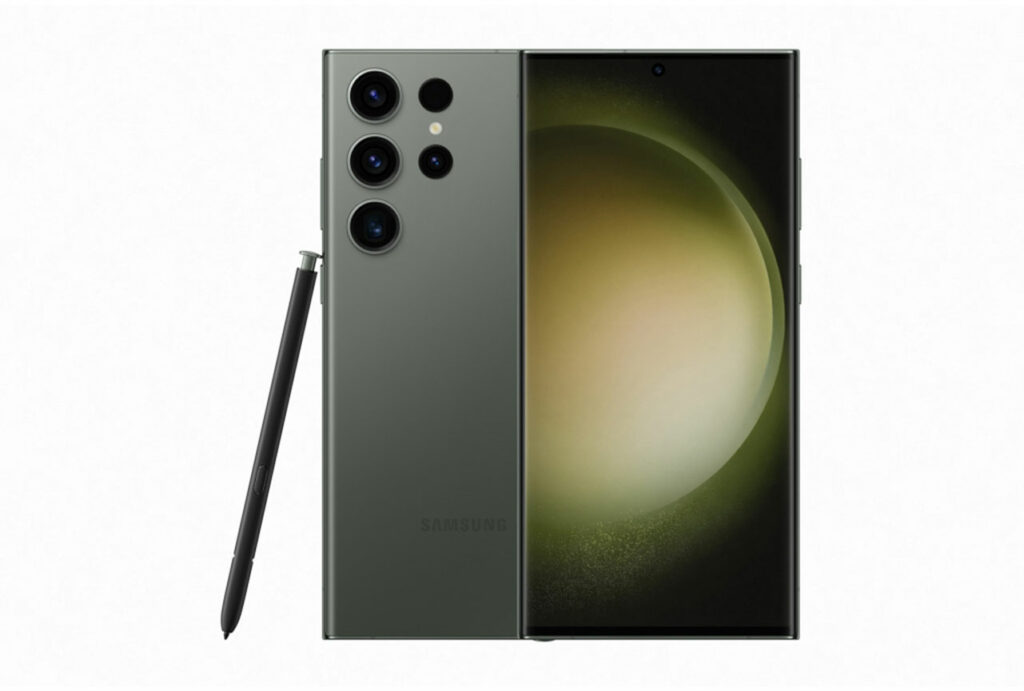
DXOMARK encourages its readers to share comments on the articles. To read or post comments, Disqus cookies are required. Change your Cookies Preferences and read more about our Comment Policy.